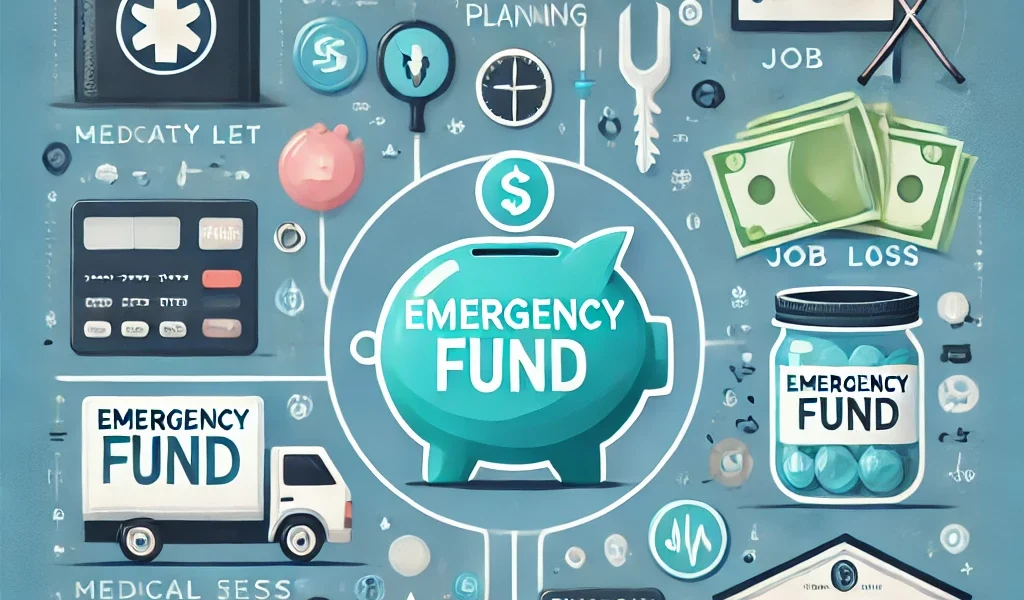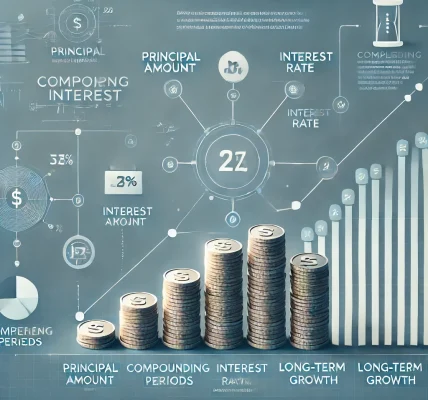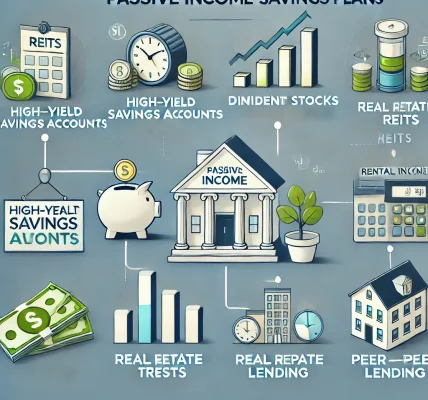Introduction
Life is unpredictable, and financial emergencies can arise at any time. Whether it’s a medical emergency, job loss, or unexpected home repairs, having a well-planned emergency fund can protect you from financial stress.
An emergency fund is a dedicated pool of money set aside for unexpected expenses. Unlike investments, this fund should be liquid and easily accessible. The goal is to ensure financial security without relying on loans or credit cards, which can lead to debt accumulation.
In this blog, we’ll explore why an emergency fund is essential, how much you should save, where to keep it, and the best strategies to build one efficiently.
Why You Need an Emergency Fund
1. Financial Security
An emergency fund acts as a safety net, preventing financial instability during uncertain times. It helps cover urgent expenses without disrupting long-term financial goals.
2. Avoiding Debt
Without savings, you might have to rely on credit cards or loans, leading to high-interest debt. An emergency fund prevents this by covering unexpected expenses with your own money.
3. Job Loss Protection
Losing a job can be financially devastating. Having an emergency fund ensures that you can cover essential living expenses while searching for a new job.
4. Handling Medical Emergencies
Even with health insurance, unexpected medical bills can be costly. An emergency fund helps cover deductibles, co-pays, and out-of-pocket expenses.
5. Peace of Mind
Knowing you have a financial cushion reduces stress and allows you to focus on long-term financial growth rather than short-term crises.
How Much Should You Save in an Emergency Fund?
General Rule of Thumb
Most financial experts recommend saving at least 3 to 6 months’ worth of essential expenses. However, the ideal amount varies based on personal circumstances.
Factors to Consider
✅ Income Stability: If you have a stable job, 3 months of expenses may be enough. If you’re self-employed or in an unstable job, aim for 6–12 months. ✅ Dependents: If you have children or elderly parents to support, save extra to cover their needs. ✅ Insurance Coverage: Good insurance policies can reduce the emergency fund amount required. ✅ Fixed vs. Variable Expenses: If your monthly expenses are high, consider saving a larger fund.
How to Calculate Your Emergency Fund
- List Your Essential Monthly Expenses: Rent/mortgage, groceries, utilities, insurance, transportation, loan repayments, etc.
- Multiply by the Recommended Months: Multiply your total essential expenses by 3, 6, or 12 months, depending on your needs.
- Set a Target Goal: This amount is what you should aim to save.
Best Strategies to Build an Emergency Fund
1. Set Clear Savings Goals
Define a specific goal amount and a timeline to achieve it. Breaking it into smaller, achievable targets makes it easier to stay committed.
2. Automate Your Savings
✅ Set up an automatic transfer to a dedicated emergency fund account every month. ✅ Treat it like a non-negotiable expense, just like paying rent or bills.
3. Cut Unnecessary Expenses
✅ Review your budget and eliminate non-essential spending, like dining out or subscriptions. ✅ Redirect these savings into your emergency fund.
4. Use Windfalls Wisely
✅ Any unexpected income—bonuses, tax refunds, or gifts—should be directed to your emergency fund instead of unnecessary spending.
5. Start Small but Stay Consistent
✅ If saving large amounts seems difficult, start small. ✅ Even saving $20–$50 per week can grow significantly over time.
6. Keep It Separate and Accessible
✅ Store your emergency fund in a high-yield savings account rather than your everyday checking account. ✅ Ensure it remains liquid and easy to access in case of emergencies.
7. Replenish After Use
✅ If you need to use your emergency fund, make it a priority to replenish it as soon as possible.
Best Places to Keep Your Emergency Fund
1. High-Yield Savings Accounts
📌 Pros: Easy access, earns interest, FDIC insured 📌 Cons: Lower returns compared to investments
2. Money Market Accounts
📌 Pros: Higher interest than regular savings, limited check-writing 📌 Cons: May have minimum balance requirements
3. Fixed Deposits with Withdrawal Flexibility
📌 Pros: Higher returns than savings accounts 📌 Cons: May have penalties for early withdrawal
4. Liquid Mutual Funds
📌 Pros: Higher returns than bank savings accounts 📌 Cons: Slight risk, may take a day or two to withdraw funds
Common Mistakes to Avoid
❌ Not Starting Early
Waiting too long to build an emergency fund leaves you vulnerable to financial crises.
❌ Keeping It in the Wrong Account
Avoid keeping emergency savings in risky investments or inaccessible accounts.
❌ Using It for Non-Emergencies
Your emergency fund is not for vacations, shopping, or non-essential expenses.
❌ Not Replenishing It
Once you use funds, make it a priority to restore them.
Conclusion
Having a well-planned emergency fund is crucial for financial security. By saving strategically and avoiding common mistakes, you can protect yourself from unexpected financial shocks.
🔹 Start today, even if it’s a small amount. 🔹 Stay consistent and make it a habit. 🔹 Choose the right savings method to grow your fund safely.
By following these strategies, you’ll ensure financial stability during uncertain times while staying legally compliant. ✅🚀




